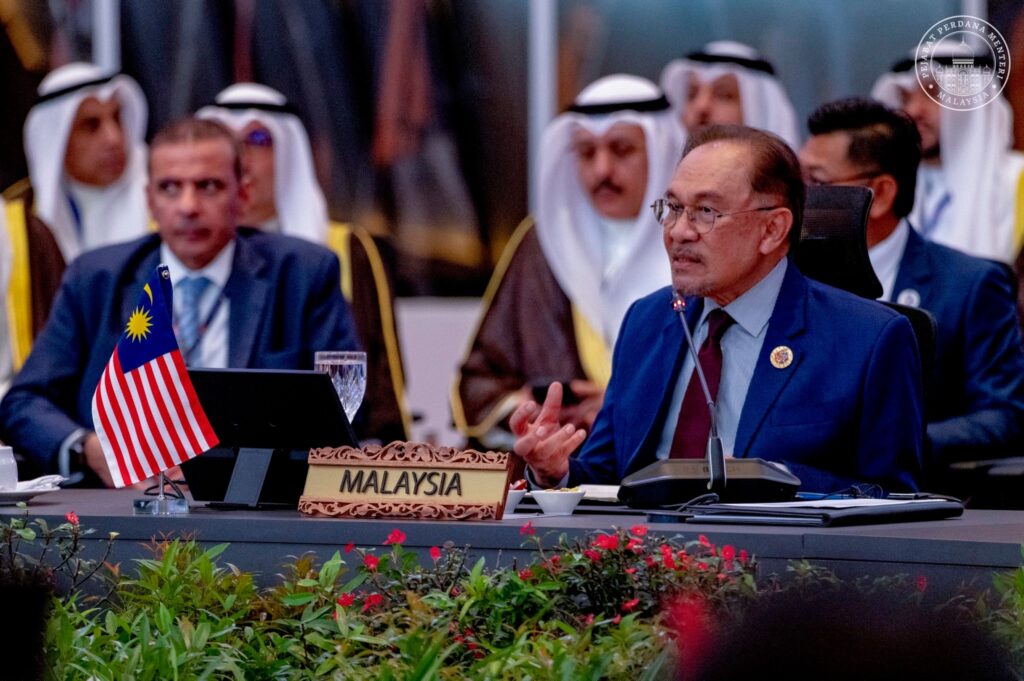
by Dr Rahim Said
KUALA LUMPUR, May 27: At a time when economic nationalism is making a regrettable comeback and trade wars masquerade as patriotism, it’s worth pausing to applaud a rare moment of clarity in regional diplomacy.
Prime Minister Datuk Seri Anwar Ibrahim’s address at the inaugural ASEAN-GCC-China Summit deserves recognition — not merely for the polished platitudes of cooperation, but for what it signals: a collective front against Washington’s weaponised tariff walls.
The numbers alone are staggering. ASEAN, the GCC, and China collectively command a GDP of nearly US$25 trillion and represent a population exceeding 2.1 billion. In a world of fragmented alliances and selective decoupling, this summit isn’t just another diplomatic soirée. It’s a strategic signal to the world’s largest economy: if you build tariff walls, others will build bridges.
It was only fitting that China’s Premier Li Qiang was present, given China’s role as ASEAN’s largest trading partner since 2009.
The symbiosis is no accident. China’s relentless appetite for raw materials, agricultural produce, and intermediate goods has fuelled growth in Southeast Asia while flooding the region with consumer electronics, industrial machinery, and high-tech products. Trade between ASEAN and China has more than doubled in under a decade.
In just the first quarter of 2025, trade surpassed RM1 trillion. These aren’t just statistics — they’re a lifeline for economies now caught in the crossfire of a resurgent protectionist America.
And let’s not ignore the elephant in the room: President Donald Trump’s so-called “Liberation Day” tariffs, which slapped punitive duties on imports from China and several ASEAN nations, with Chinese goods facing levies of up to 145 per cent. Although these have been readjusted lately, the wound lingers.
The intent was clear — economic suffocation disguised as domestic revival.
In this climate, ASEAN’s 46th Summit and its resulting declaration for deeper collaboration wasn’t merely procedural. It was a necessary act of economic self-preservation.
Anwar was right to remind the gathering that ASEAN has long demonstrated the viability of regionalism based on consensus and mutual respect. It’s an antidote to the kind of unilateralism currently emanating from Washington.
The GCC’s involvement in this trilateral arrangement adds a valuable dimension. As energy producers navigate a world moving — however unevenly — towards renewables and supply chain resilience, Gulf nations have every reason to court stable, expanding markets in Asia. And ASEAN, with its youthful population and rising middle class, offers precisely that.
Anwar’s message was unmistakable: “We have thrived in our longstanding partnerships with the GCC and China. Today, we have the opportunity to enhance these ties.”
In plain terms, if the US insists on isolating itself behind tariff barriers, then ASEAN, the GCC, and China will find ways to prosper without it.
Of course, one summit won’t undo years of structural dependencies on Western markets. But it’s a start — a carefully staged assertion that globalisation isn’t dead, it’s merely being redefined by those once on its margins.
Anwar’s remarks aren’t just diplomacy. They are a strategic reminder that in an age of tariff walls and trade tantrums, there’s strength in numbers. And sometimes, the best way to counter a wall is to build a bigger table.
The views of the writer are entirely his own
WE